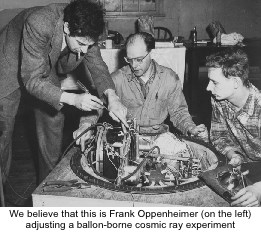 | Another manifestation of the central role of separating research from problem-solving is illustrated by a controversy that raged during the nineteenth century concerning the age of the Earth. From purely geological evidence, sedimentation rates, etc., geologists concluded that the Earth must be well over one billion years old. But this age contradicted evidence provided by the high temperature of the interior of the Earth, hot springs, molten lava, etc. The Earth radiates this heat to cold outer space much faster than the sun keeps the planet warm, so that the Earth would cool fairly rapidly, in about one one-hundredth the time claimed to be the age of the Earth by geological evidence. The solution to this problem could not have come from either the geologists or the physicists of the time. The solution came from a completely different kind of research at the beginning of the twentieth century: the study of radioactivity. There is enough uranium and thorium in the Earth's rocks to keep the Earth warm. This pattern of discovery'the bringing together of two initially completely independent domains of basic research'is characteristic of progress in both the practical and the sentimental fruits of science. It is clearly shown in the invention of lasers, semiconductors, and super conductors, and in the many roles that nuclear energy can play both on Earth and in the stars. In general, what science has done through its wandering explorations is to discover things that were happening in nature that nobody knew were happening. These newly discovered phenomena'whether they have to do with semiconductors, radioactivity, induced emission, or electromagnetic waves-have provided the raw materials for new invention. Virtually every newly discovered natural behavior has opened up a plethora of new inventions. On the other hand, without this continuing insertion of fresh raw material, we become stuck. We then go 'round and 'round in the same path, both technically and philosophically. It was largely this lack of 'raw material' that caused invention to be mired down before the scientific revolution, before | ||||
| together a group of physicists to study cosmic rays at very high altitude. The General Mills Corporation was developing huge balloons that could carry an eighty-pound payload to an altitude of one hundred thousand feet (about twenty miles). These balloons made it possible to adapt standard instruments to the study of nuclear reactions using very-high-energy cosmic rays well before the high-energy accelerators of today had been developed. We accordingly built a cloud chamber that enabled us to successfully photograph nuclear interactions. But the most surprising results came from a stack of photographic plates that we had added to the payload. These plates did not show incoming cosmic ray hydrogen nuclei (protons) very well, but they did show, when developed, heavy dark lines that were the tracks of fast moving, highly electrified particles. We had made a discovery! These tracks were due to the presence, in the incoming cosmic rays, of the nuclei of all the elements: carbon, oxygen, iron, etc. Up to that time, only the nuclei of hydrogen had been observed in incoming cosmic rays. This discovery immediately turned around the direction of our research. We began to study the origin of cosmic rays and what happens to them as they move in our galaxy. Our thrust became more involved with aspects of cosmology than with the study of nuclear physics. | |||||